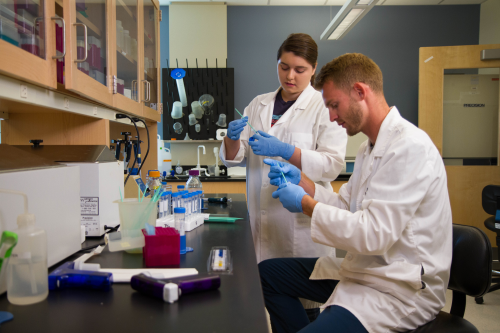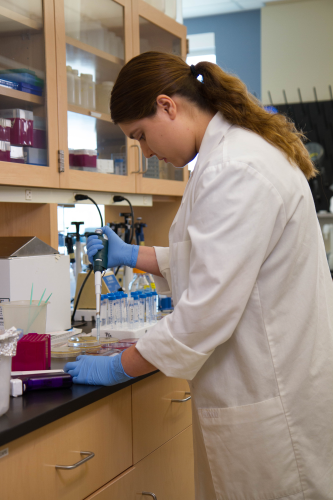

Whether it is a major housing development, a heavy-duty engineering facility or a chemical plant, one of the main common denominators is demand for water. No matter what the location may be, careful consideration needs to be given as to how much water is needed and the best way of ensuring that every drop is used effectively and efficiently.
That is certainly the case for the Dow Chemical Company at its sites in Michigan, Texas, the Netherlands and Spain. They all have significant water requirements in locations where the availability of a reliable supply is challenging.
Scott Burr, Research and Development Leader for Dow Water & Process Solutions, explained: “In Texas, in 2011, there was a serious drought and the Brazos River Basin that feeds the plant and all the surrounding communities was extremely strained. It forced the whole region to look hard at how we use water. In our plants, we set about working with our employees, the local government and our peers to develop strategies and ideas which focused on how we could reduce water consumption and increase reuse.”
Using sea water for a cooling tower at a power plant saved 200 gals a minute, while improving operations at the Spanish Demoware cut another 1,600 gals a minute. Collaborating with the City of Lake Jackson to use its treated waste water saved another 500 gals per minute. Installing piping valves for meters and other instrumentation in propylene oxide plants saved another 3000 gals per minute.
Efficiency drive
The efficiency drive is ongoing. UN projections for the first 50 years of the millennium show water use increasing by 400%, which is unsustainable. As a result, Dow Water is using its own technology, along with that of other organisations and drawing on the expertise of communities, employees and partners to make water savings.
The strength of Dow Water’s solutions lies in membranes and ion exchange rate. Within the membranes, ultra-flotation modules combine with manual filtration products and reverse osmosis. The ion exchange contains a full range of products which can be fine-tuned to the particular application.
At the Camp de Tarragona petrochemical complex in Catalonia, Spain there are competing water demands across the agricultural, industrial, and residential markets. The complex handles 19,000m3 of water per hour, including previously used freshwater from the Ebro River Basin to power its industrial processes.
Run by Veolia Environmental, reclamation efforts are focused on two technologies from Dow - FILMTEC BW30XFR and FILMTEC LE-440. These are membranes that are extra solvent resistant, low energy and produce high water quality. They have reduced energy demand by producing water with 33% less pressure while meeting the ultimate goal of reducing demand on new supply.
Mr Burr added: “When we drive through at a higher pressure it costs us more energy and they tend to foul more. You get the same water quality with less pressure which results in more resistance to fouling.”
Dow's own site at Tarragona also employs treated wastewater for its cooling tower operations. The ethylene cracker cooling tower now uses up to 40% reclaimed water and has cut its use of chemicals for water treatment by 23%. This frees up more than 200m3 per hour of water for the municipality depending on the season.
Continuous adjustment
Wastewater generated by the cooling towers has also been reduced by up to 49% due to the higher quality of the reused water. With continuous adjustment and improvement, the project aims to meet 90% of the complex’s water needs with reclaimed water by 2019.
A similar scenario is in place at the Dow Terneuzen plant in the Netherlands. In the 1990s the company created a public/private partnership with the Water Board Scheldestromen, the City of Terneuzen and water company Evides. This included recycling municipal and industrial water as well as producing demineralized water.
The recycling program involves Dow Terneuzen receiving 30,000m3 of wastewater every day from the city which is purified by Evides. It is then used to generate steam and feed its manufacturing plants. By 2020, the plant hopes to exclusively use recycled water.
Dow Terneuzen has also reduced its energy use by 95% when compared to the energy cost needed for conventional desalination of seawater. The reduction is the equivalent of cutting carbon dioxide emissions by 60,000 tons a year.
At Freeport, Texas, Dow operates the largest integrated chemical manufacturing complex in the Western Hemisphere. Here, Dow collaborated with the City of Lake Jackson to divert treated wastewater effluent to Dow's raw freshwater canal, rather than discharging it to the river. As a result, Dow is expected to reduce freshwater use by over 1.3 billion gals a year, enough to supply a community of 30,000 people.
All of these improvements are contributing to Dow’s 2025 Sustainability Goals to reduce its freshwater intake intensity at key water stressed sites and its waste intensity footprint by 20%.
Direct relationship
Another major contribution will come from its direct relationship with the WEST Center at the University of Arizona which specializes in water and wastewater treatment and monitoring, alternative energy and related technologies. Significantly, the Center is located at the Pima County water reclamation facility, Agua Nueva, adjacent to reclaimed water recharge basins and constructed wetlands, all of which is part of a Water Reclamation Campus. More than 300 faculty members study varying aspects of water. Professor of Chemical and Environmental Engineering and co-director of the WEST Center, Dr Shane Snyder, said: “We have water flowing from the reclamation facility into all the labs in our building continuously which allows us to partner with water technology companies like Dow and we can do experiments in areas such as membrane fouling.”
The public private partnership has been very successful, especially in a climate of decreasing federal research money which is an ongoing trend and more programs are developing. The WEST Center has only been open for a year but in that time, has won three major federal grants, two of them for water treatment technologies. Working in partnership with 14 companies such as Dow has helped with that process.
In this climate, it is important for universities to engage with industry and water agencies, actively informing them of the capability of scientists and being flexible so they can become involved in public health or social sciences.
That in turn helps with education. Instead of just reading about treatment processes, students can gain hands on experience in areas such as diagnostics, operations and maintenance. Those studying for PhDs and masters’ degrees can take lead roles in company projects such as membrane studies, while undergraduates learn in the classroom before being taken to a company to see how their studies are applied in the real world.
Dr Snyder said: “It’s a win-win scenario for the university to have this kind of technology within our campus and not just talk about it from a book. What has been encouraging is the degree of enthusiasm from students in our program and the growth in the number of applicants we are receiving.
"A lot of students become passionate about water because we are in an extremely arid region of the United States where we are seeing decreasing flows in the Colorado River. To get water to Tucson we pump it 336 miles and up to an elevation of 2,900ft. This takes about 2.8 megawatts of energy per year so students begin to understand water scarcity scenarios not only here but around the world. As a result, they see this as an opportunity not only to get employed but to really contribute to society.
"Ultimately, what makes me happy is our students getting hired because if they can’t a find a job we haven’t done our job. In the United States we are tracking 52 new portable water reuse projects that have been publicly announced or discussed and we believe there are far more."
Greater good
Mr Burr added: “Leading these people is exciting. Their youth, energy, expertise and training is very healthy for the industry globally. But it’s interesting to see the shift over a few decades of the greater good requirement for this generation of research. There has to be a good component and water is clearly one of those areas.” Meanwhile, plant operators can also engage with the university to gain certification and learn about the latest advances in technology which they can apply in the workplace.
Clearly the relationship between the WEST Center and Dow has not only developed quickly but has proved extremely fruitful with several projects in the pipeline, one of which is the construction of a small demonstration plant within the Center showcasing water reclamation using Dow products.
A more major project will be to tackle the problem of bringing water up from Colorado which also means importing about 644 megatons of salt every day into Tucson.
Dr Snyder explained: "We recycle water, it’s looped back and forth, so the salt is accumulating. The intention is to build a new system which will include desalinating membrane technology. One of the ones we’re interested in is nano filtration. We’re working on technologies to limit the amount of water that’s lost.”
Applications for the research and technological advances go beyond the municipal sector, for example in the food and beverage industry, with PepsiCo recently joining the Center. The relationship with Dow will also help develop other areas and relationships with different sectors.
What is clear is that water is not just a necessary resource but a vital asset in a global economy where demand is outstripping supply. Companies such as Dow and institutions such as the West Center could be responsible for the type of research and technology that will not just create a business advantage but contribute to the wellbeing of future generations.
Mr Burr said: “We all have to come together because we are required to make sure that we have the right kind of water at the right place at the right time. It’s not a one size fits all moving forward. We must get very good at analysing water supplies economically and in terms of viability. The only way to determine that is to work together. We don’t have time to approach it on our own, the stakes are too high.”





